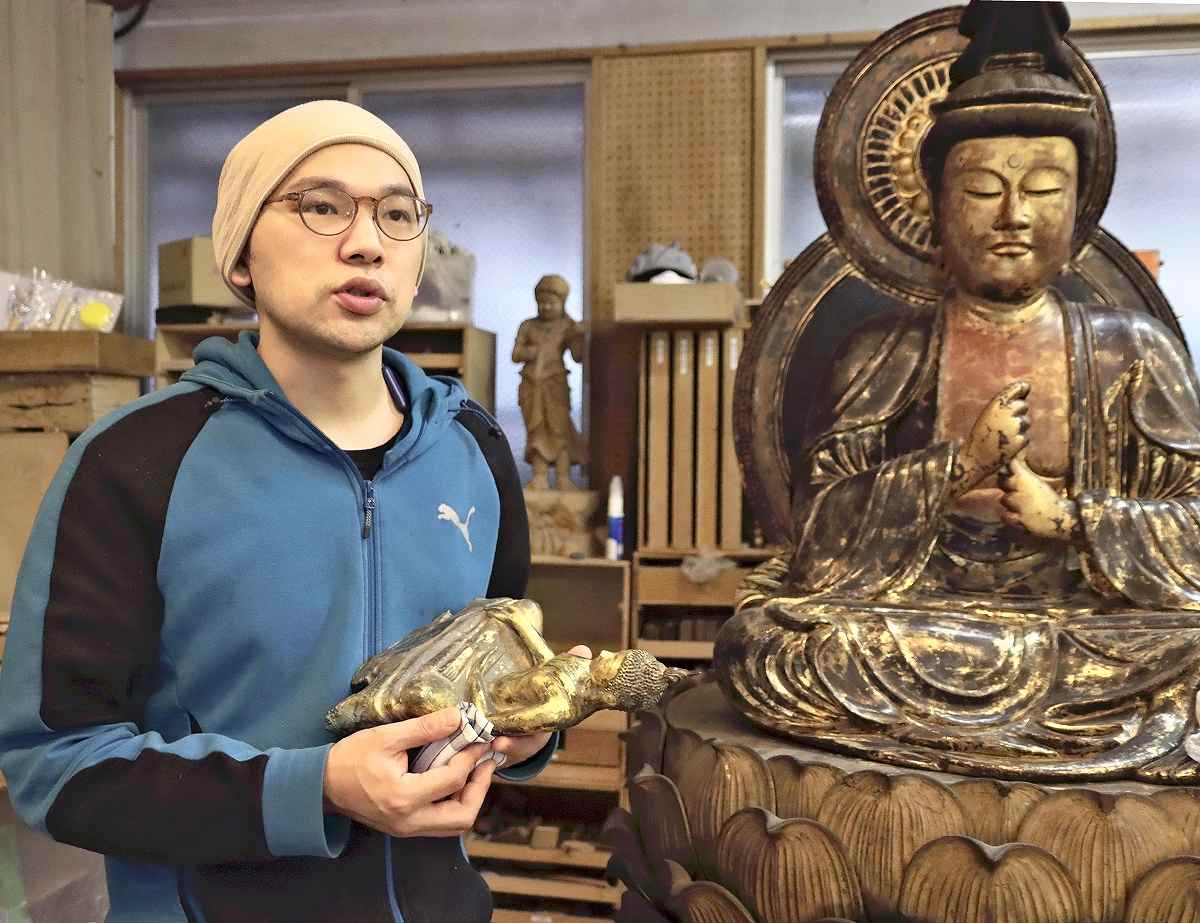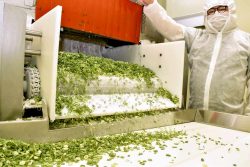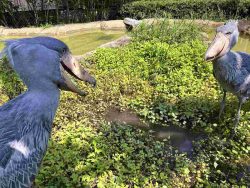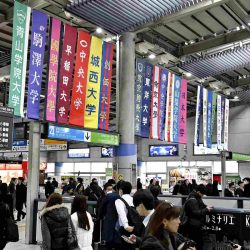Laotian Buddhist Statues Get a New Lease on Life; A Japanese Sculptor Takes His Skills Overseas To Restore Laotian Artifacts

Yoshitaka Suzuki devotes his energies to repairing Laotian Buddhist statues, in Minobu, Yamanashi Prefecture.
12:04 JST, March 6, 2024
MINOBU, Yamanashi — From Buddhist statues’ missing heads to destroyed temples, many scars of Laos’ civil war still remain today. But in Luang Prabang, a World Heritage site home to many temples and also a very popular tourist spot, Yoshitaka Suzuki, a Japanese sculptor of Buddhist images, is leading the way in a project to restore these statues. His reason for devoting his skills to a project in a nation about 4,000 kilometers from Japan is simple. “I want to preserve the local people’s places of prayer,” said Suzuki, 40.
Born in Yokohama, Suzuki has always been fond of “old things” such as Buddhist statues. After graduating from high school, Suzuki attended Minobusan University in Minobu, Yamanashi Prefecture, to study Buddhist arts. There, he learned how Buddhist statues are produced and their restoration methods.
In the summer of 2002, about six months after he began university, Suzuki traveled to Laos as part of a Buddhist statue restoration project started by the university in 2000. “Everything I saw and heard was interesting,” Suzuki recalled. After graduating, he spent some time studying in the United States and doing other things before eventually returning to Minobusan University as a research student in 2009 and diving back into the restoration project.
Luang Prabang is an ancient city in northern Laos that once flourished as a kingdom capital. The city is known for streetscapes featuring a blend of Buddhist temples and architecture from its time as a French colony. However, many Buddhist statues were destroyed or stolen during the civil war that raged for about 20 years after Laos became independent in 1953. Knowledge of restoration techniques faded over the years, and many statues were left in a damaged condition.
Participants in the project peel the paint off damaged statues, treat the surfaces and then bring them back to life with colors that appear aged to create an antique appearance. Image data of statue’s shape is stored using a 3D scanner, in case they are stolen or lost. About 90 statues have been repaired through the project, and local residents are being taught techniques for restoring these items.
There was an incident that made Suzuki even more determined to continue this project.
One day, a Laotian village resident who had driven more than eight hours to Luang Prabang brought a statue head and a statue body and asked that the two pieces be rejoined. However, the head and body were clearly from different statues. Nonetheless, Suzuki tried every method he could think of to make the hybrid statue look as natural as possible. When the repaired statue was handed back, the villagers burst into tears of happiness and started a ceremony on the spot. “Our job isn’t simply to fix things that are broken,” Suzuki said. “We have to think about the fact that people pray to these statues, so we must be considerate of their feelings.”
This year marks a major turning point for the project. The Laotian government has been so impressed by the results that it asked for the project’s activities to be expanded across the entire nation. As a result, a major undertaking — involving the creation of a ledger detailing Buddhist statues from all over Laos and establishing a restoration office in the capital, Vientiane, which will serve as a base for pushing ahead with these activities — will start. The project also aims at some stage to create a cultural property protection system similar to the one for Japan’s national treasures.
Raising awareness of these activities is another objective of the project. The possibility of working closely with travel agencies to develop “study tours,” in which participants can try their hand at restoring statues, is also under consideration.
Related Tags
"Features" POPULAR ARTICLE
-

Sanrio to Open Museum in Yamanashi Pref. Dedicated to Founder, Exhibits Include Hello Kitty, Other Characters
-

Autumn Foliage Surrounds Visitors to Tokyo’s Showa Kinen Park
-

My Daughter No Longer Speaks to Me, But I Want to See Her and My Grandchild
-

Kumamoto: Public Bath Refurbished as Library Where You Can Chat, Take Photos
-

Frozen Vegetables: Demand Rises for Convenient, Tasty Domestic Produce
JN ACCESS RANKING
-

Tokyo Economic Security Forum to Hold Inaugural Meeting Amid Tense Global Environment
-

Keidanren Chairman Yoshinobu Tsutsui Visits Kashiwazaki-Kariwa Nuclear Power Plant; Inspects New Emergency Safety System
-

Imports of Rare Earths from China Facing Delays, May Be Caused by Deterioration of Japan-China Relations
-

University of Tokyo Professor Discusses Japanese Economic Security in Interview Ahead of Forum
-

Japan Pulls out of Vietnam Nuclear Project, Complicating Hanoi’s Power Plans



























